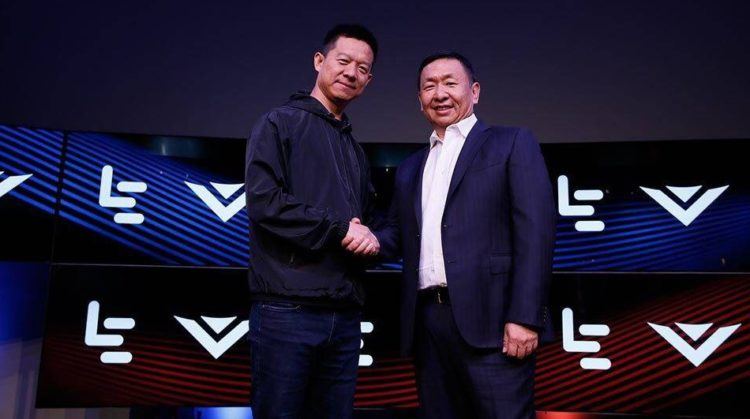
Chinese tech giant LeEco, famed for everything from its Netflix-like video streaming service to its not-quite-real-yet self-driving car, has been having a rough go of it in America.
It missed its 2016 US sales targets by a lot. Its content subscription service, EcoPass, flopped and has been shut down. Its deal to buy US-based TV maker Vizio has fallen through. The land LeEco bought last year to build a massive campus in Silicon Valley is reportedly up for sale, and the company’s US branch has been hit with both high-profile executive departures and layoffs.
In short, things are falling apart for LeEco in the US. Which begs the question: what exactly did the company do wrong?
1. Expanding faster than it could afford
Not long ago, LeEco (then called Letv) was mostly just a video streaming company. But over the past few years, bolstered by founder Jia Yueting’s personal fortune and an apparent assumption that China’s easy-VC-capital era would last forever, the company exploded. By 2016 it was involved in smartphones, virtual reality, smart TVs, electric smart cars, cloud computing, music streaming, live sports, smart bikes, film production, wine ecommerce, internet finance, and real estate/property – just to name a few!
And of course, on top of that was an aggressive geographical expansion that saw the company buying property and big-name talent in Silicon Valley ahead of a ritzy US launch last fall. Plenty of people (including me) worried that the company was spreading itself too thin.
At least financially, that seems to have been the case. LeEco’s funding situation has always been a bit murky, but the company clearly doesn’t have the cash to sustain its ambitious American plans. Even after a round of layoffs, cash has apparently been so tight that the company has missed payroll at least once, according to Bloomberg.
Former employees told Gizmodo that reimbursements were also incredibly slow, and some claim they’re still owed significant sums of money.
The lesson here: the more ambitious your plans, the more conservative you ought to be when allocating funding. LeEco seems to have been counting on an instant sales explosion in the US; its 2016 sales target for the region was reportedly US$100 million. A Bloomberg source says that in reality, the company didn’t even crack US$15 million in revenue, and it apparently didn’t have the capital on hand to cover that kind of shortfall.

It’s a deal: Jia Yueting (left) with Vizio’s William Wang in happier days. Photo credit: LeEco’s Weibo account.
2. Assuming what works in China works in America
LeEco launched in the US using a strategy that has worked incredibly well for new smart gadget companies in China: online-only flash sales. Ever since Xiaomi rose to prominence in the Middle Kingdom using that strategy, it has been a tried-and-true approach for new smartphone makers looking to enter the arena.
But many people (again, including me) were skeptical that this approach would work in the US. Americans don’t buy their smartphones via flash sales, but even if they did, how many American consumers would be willing to pay hundreds of dollars through the website of a Chinese company that had just launched? The answer, it turned out, was not many.
The lesson here: Know your market culture. The things that worked in your home country may not work when you expand overseas. That’s a lesson many American companies learned the hard way when trying to expand into China, too.
3. Not trusting the local talent it hired
One of the easiest ways to know your local market culture is just to hire locals. And to its credit, LeEco did that. It brought in big names to fill out positions at the executive level, reportedly offering above-market compensation to ensure it attracted the top talent. But then, former employees told Gizmodo, it didn’t listen to those people.
The American branch of the company, former employees say, was “shadow run” by Chinese executives who didn’t understand the market as well as the people they’d hired. That led to many of those high-profile hires departing, and it also probably led to some of the strategic mistakes (like the online flash sales).
The lesson here: Hire locals who know the terrain, and then listen to them and empower them. If you hire the best experts but then ignore or override them, you might as well not bother hiring them in the first place.
4. Not taking the time to build a brand
LeEco’s flash sale strategy would have been a questionable idea even if it was a famous brand, but it was made much worse by the fact that nobody in the US has ever heard of it. In Silicon Valley – where the company was buying expensive property and bringing in top talent – plenty of people know the name LeEco, but that was little help to LeEco, which was trying to sell low-cost smartphones. Silicon Valley’s high paid tech crowd doesn’t buy low-cost anything.
Elsewhere in the country the name LeEco is pretty much unknown. I live in the US, and I’ve never seen a LeEco ad or any other form of marketing in the wild here. Even in the context of Chinese phones that are available in the US, I’ve never heard another American so much as mention LeEco (they’re more likely to talk about OnePlus, Xiaomi, or Huawei). I haven’t conducted a scientific poll or anything, but I would guess that even now, half a year after its US launch, American consumer brand recognition of LeEco is still near zero.
The lesson here: building a brand in a new market doesn’t happen overnight, and you can’t assume that your brand reputation in your home country means anything abroad. I’m not sure what led LeEco to go ahead with its launch despite such poor brand recognition in the US, but it’s possible the company overestimated its brand’s reach – it is a household name in China, after all.
This post Opinion: 4 lessons you can learn from LeEco’s failure in the US appeared first on Tech in Asia.
from Tech in Asia https://www.techinasia.com/opinion-4-lessons-learn-leecos-failure
via IFTTT
No comments:
Post a Comment